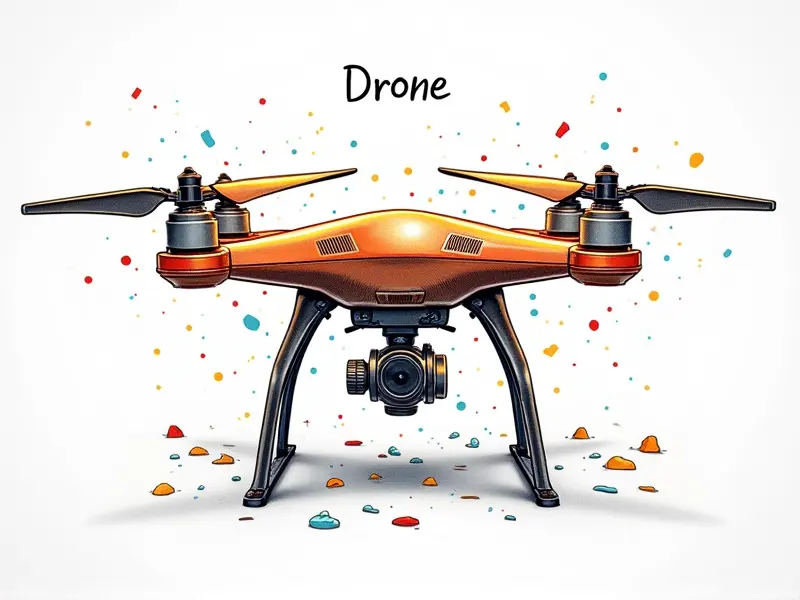Best camera settings for drones?

Ultimate Guide to Drone Camera Optimization
Welcome to the ultimate guide on optimizing your drone's camera settings. Whether you're a seasoned RC pilot or just starting out, this comprehensive article will help you achieve stunning aerial photography and videography with ease.
Maximize Your Drone's Camera Potential
To get the most out of your drone’s camera, it is crucial to understand its capabilities and limitations. Modern drones come equipped with advanced features such as adjustable ISO, shutter speed, aperture, and white balance settings. By mastering these controls, you can capture high-quality images and videos that stand out.
Essential Camera Settings for RC Pilots
The key to great drone photography lies in understanding the essential camera settings:
- ISO: Adjust this setting based on lighting conditions. A higher ISO is useful in low-light environments, but it can introduce noise into your images.
- Shutter Speed: Control motion blur and freeze action by adjusting the shutter speed. Faster speeds are ideal for capturing fast-moving subjects or avoiding camera shake.
- Aperture (f-stop): This setting affects depth of field, allowing you to control how much of your scene is in focus. A wider aperture (lower f-number) creates a shallow depth of field, while a narrower aperture (higher f-number) increases the depth of field.
- White Balance: Ensure accurate color representation by adjusting white balance settings according to the lighting conditions.
Best Practices for Drone Camera Settings
To achieve optimal results, follow these best practices:
- Shoot in RAW Format: RAW files contain more data than JPEGs and allow for greater flexibility during post-processing.
- Use Manual Mode: Take control of your camera settings to fine-tune exposure, focus, and other parameters according to the specific needs of each shot.
- Experiment with Different ISO Settings: Find a balance between noise reduction and adequate light sensitivity for various shooting conditions.
Top Tips for Drone Camera Optimization
Here are some top tips to help you optimize your drone camera settings:
- Pre-flight Calibration: Calibrate your drone’s sensors and gimbal before each flight to ensure accurate readings.
- Leverage HDR Mode: Use high dynamic range (HDR) mode to capture a wider range of tones in challenging lighting conditions.
- Utilize GPS Lock: Enable GPS lock for stable and consistent shots, especially when shooting long exposures or time-lapse sequences.
Mastery Drone Photography with Perfect Settings
To master drone photography, it’s essential to practice regularly and experiment with different settings. Pay attention to composition, framing, and the rule of thirds to create visually appealing images. Additionally, consider using specialized lenses or filters for unique effects.
Achieving Pro-Quality Drone Shots Easily
With the right approach, you can achieve professional-quality drone shots effortlessly:
- Plan Your Shoots: Scout locations beforehand and plan your shots to make the most of natural light and interesting compositions.
- Use a Tripod: A tripod or gimbal mount can help stabilize your drone for sharper images, especially during long exposures.
- Post-Processing Techniques: Learn basic editing techniques to enhance the quality of your photos and videos after capture.
Quick Tips for Awesome Drone Photo Settings
Here are some quick tips to improve your drone photography:
- Adjust Exposure Compensation: Fine-tune exposure manually or use the built-in exposure compensation feature.
- Enable Image Stabilization: Use image stabilization features to reduce blur caused by camera shake or wind.
- Shoot in Burst Mode: Capture multiple frames at once for better chances of getting that perfect shot.
Simplified Guide to Ideal Drone Camera Modes
To simplify your workflow, consider using the following modes:
- AUTO Mode: Great for beginners or quick snapshots. The drone automatically adjusts settings based on lighting conditions.
- MANUAL Mode: Offers full control over ISO, shutter speed, and aperture for precise adjustments.
- PRIORITY Modes (Aperture Priority, Shutter Speed Priority): Allows you to set one parameter while the drone adjusts others automatically.
Essential Camera Settings for FPV Racing
For FPV racing drones, focus on settings that enhance visibility and responsiveness:
- High Frame Rate: Use a high frame rate to capture smooth video footage during fast-paced races.
- Wide Aperture: A wide aperture setting (low f-number) helps in focusing on the drone while reducing distractions from background elements.
Best Camera Configurations for RC Quadcopters
To optimize your quadcopter’s camera, consider these configurations:
- Gimbal Stability: Ensure your gimbal is properly calibrated and stabilized to avoid shaky footage.
- Lightweight Lenses: Use lightweight lenses that do not add unnecessary weight to the drone.
Conclusion
In conclusion, mastering your drone’s camera settings can significantly enhance your aerial photography and videography skills. By understanding essential parameters such as ISO, shutter speed, aperture, and white balance, you can capture stunning images that showcase the beauty of your surroundings. Experiment with different modes and techniques to find what works best for you and continue practicing to refine your craft.

